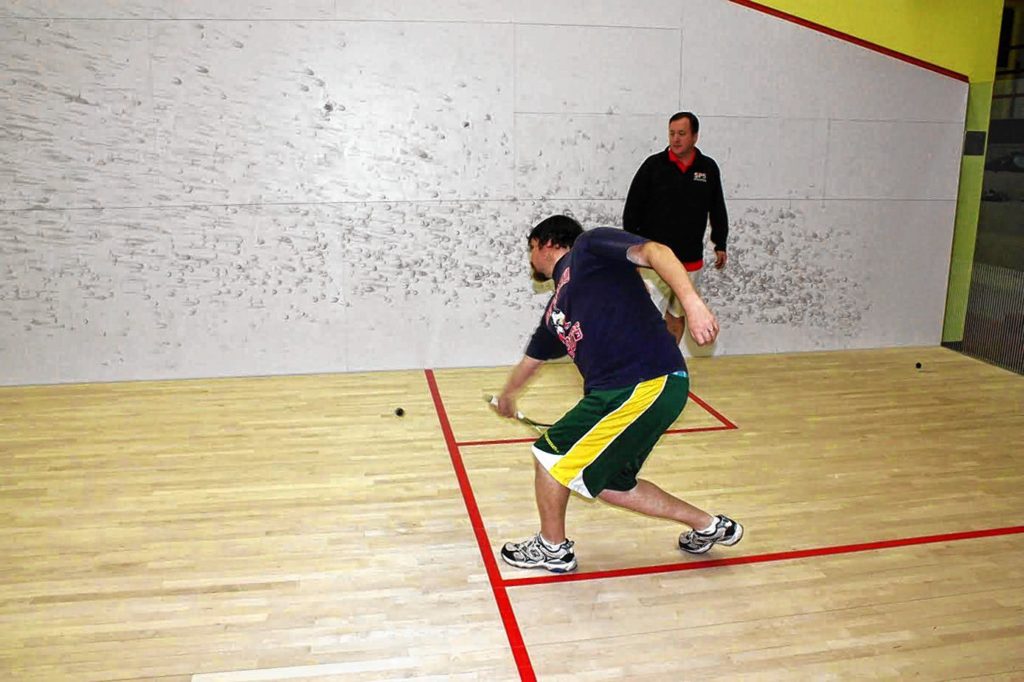Squash is one of those sports that people try to compare to another.
And it’s usually because people have no idea what it really is or what the rules are.
Is it similar to racquetball? How does it compare to tennis?
Well, to be fair, you do use a racquet when playing squash, but that’s pretty much where the similarities end.
“It gets lumped in with tennis and racquetball because it’s a racquet sport, but it can’t be any more different than them,” said Chris Smith, head coach of the St. Paul’s School’s squash teams.
Even if you’ve seen highlights, which for most come in the form of YouTube videos, it can be hard to decipher what exactly goes on in a squash match.
“It’s an obscure sport that’s hard to find,” Smith said.
So when we heard that Smith, who coached at Harvard and with the junior national team, had started a program in conjunction with Concord Parks and Recreation to get younger kids involved with the sport, we figured it was our best chance to learn.
“I really want to bring the sport to more kids in Concord,” Smith said
We took the short trip to the St. Paul’s squash building (yes, there’s an entire building dedicated to the game of squash at the school) and there we found five youngsters waiting for a lesson.
The squash courts at SPS consist of a front off-white wall with two parallel lines and a strip of tin covering the bottom 19 inches (we’ll explain a little later). The out-of-bounds areas are signified by yellow paint.
The side walls are also the same color and have a separate yellow area in the upper part that you’re not allowed to hit. The back wall is in play, and is made of glass so spectators can watch.
The courts are 21 feet wide and 35 feet long, and a fun fact is that the first squash courts in America were built at St. Paul’s. They’ve been updated since then, though.
You can play one on one or doubles, but for the purpose of this explanation, we’ll do so in the form of singles play – since that is what we took part in.
Now just like the yellow areas up high are not allowed to be hit or it’s considered out, so is that tin area we mentioned at the bottom of the front wall.
The front half of the court is wide open, while the back half (differentiated with a red line) consists of two halves and two smaller serving boxes located in the front and to the outside.
To be a legal serve, you must have one foot in the serving box and hit it above the top line on the front wall and have it land in the adjacent box.
From there, until the point is finished, the ball can bounce off any combination of walls, as long as it hits the front wall before touching the ground. The ball can only hit the court once, so you’ve got to be close to return each shot.
A match is best of five games to 11 points.
And let us tell you, it’s quite the workout. After getting some pointers from the kids, we took to the court to hit a few off the ball machine. The ball is small and squishy, but can travel pretty fast.
It didn’t take long to get the hang of the bounce from the ball machine and soon those little black balls were flying all around the court.
And sure, after a little while, just about anyone who has a hint of hand-eye coordination will be able to do the same, but playing a few points is another story – especially against someone of Smith’s level.
Although there was no way we weren’t going to play “for real.” It was pretty obvious Smith was taking it easy on us during a handful of points, judging by the velocity difference between his independent hits against the wall and the ones geared toward us.
Like most sports, there’s a strategy involved.
“I think of squash as chess on steroids,” Smith said.
Each shot has to be well thought out to maintain an advantage over your opponent.
“Deep balls, tight to the side wall, makes it harder to hit,” Smith said. “A poor shot is one that’s in the middle of the court.”
It was quickly learned that squash is a game requiring fitness and endurance – two areas we lack greatly in. So it was much appreciated when we only played for five to 10 minutes, and didn’t keep score. But it’s a game that seemed like a great time – and could get quite competitive.
“When you have two people of equal ability, it’s a lot of fun,” Smith said.
And inexpensive. All you need is a racquet, which is smaller than ones used for racquetball and with looser strings, good shoes and eye protection.
There are a two courts at the Health Club of Concord and another at the YMCA, but besides that, they aren’t all that easy to find in the area.
“Access to courts is the hardest part,” Smith said.
As for the Parks and Rec program, here’s a little info in case you want to sign the kids up.
The fourth session is set to start in April, date to be determined. Just call Parks and Rec at 225-8690 for more.
“I would have been happy with two kids signing up, but we’ve had more than 20 different kids in the three sessions so far,” Smith said.









